Swayambhunath Stupa
Swayambhu is a relic of the past, a vibrant place of worship that brings Hindu and Buddhist devotees together with its diversity and a constant buzz of activity.
Swayambhu is a relic of the past, a vibrant place of worship that brings Hindu and Buddhist devotees together with its diversity and a constant buzz of activity.
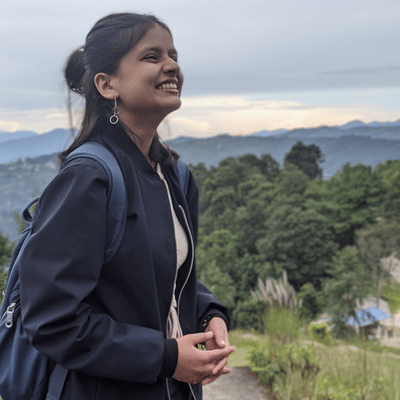
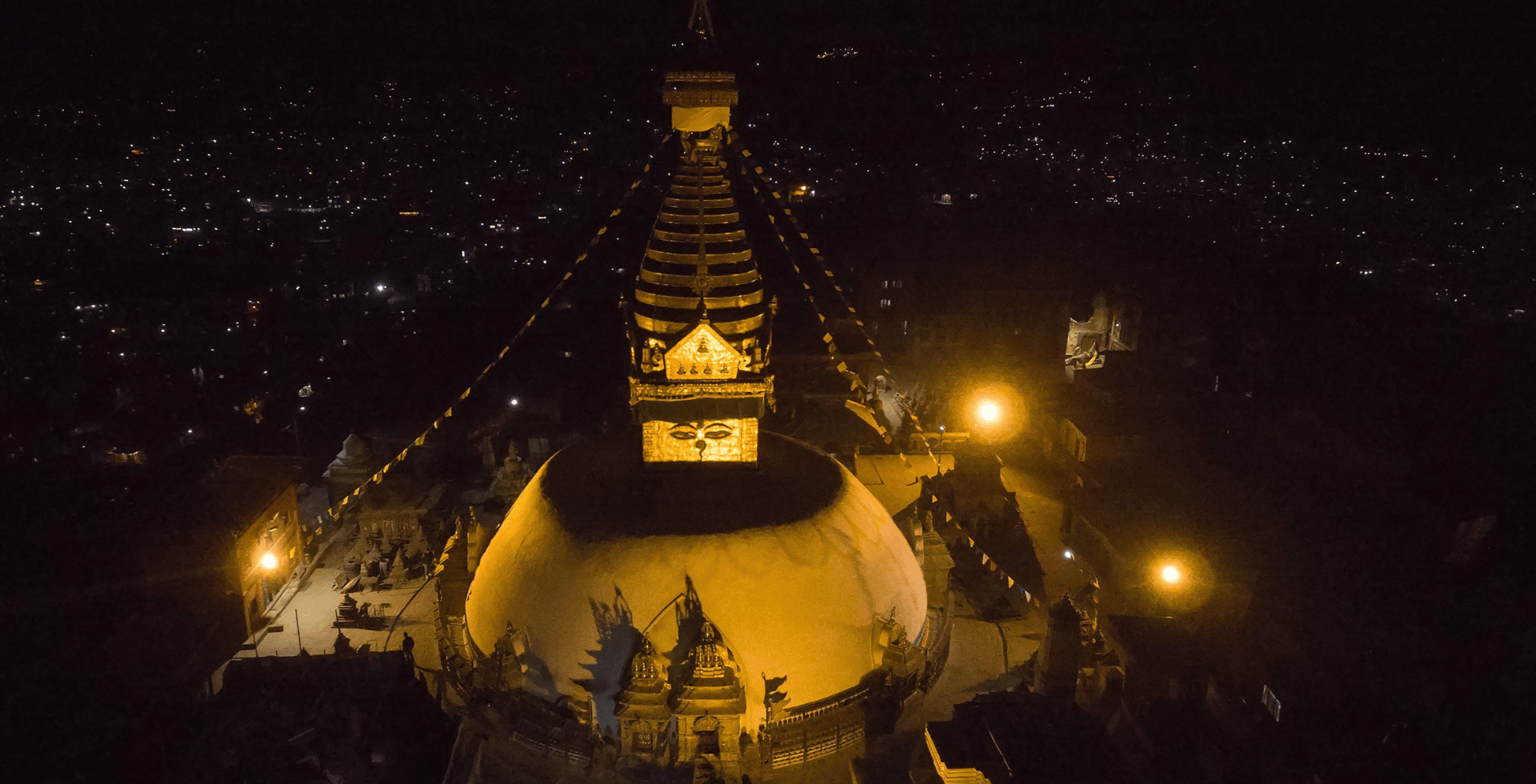
Swayambhunath, also called Swoyambhu or Swayambhu Maha Chaitya, Swayambhu Stupa, etc. is an ancient and sacred Buddhist stupa located on top of a hillock in the Kathmandu Valley of Nepal. As you trek up the hill, you will be greeted by vibrant prayer flags fluttering in the wind, the aroma of burning incense, and the sound of rotating prayer wheels. Upon reaching the top, the giant stupa with a pair of eyes painted in all cardinal directions will catch your attention. However, this is only the start of the stunning visual feast that awaits you.
As you explore the temple complex, you'll discover wooden and stone carvings, murals, and statues depicting various aspects of Buddhism and Hinduism. The temple is also home to a lively population of resident monkeys, adding to the unique atmosphere of the temple, and making it a truly one-of-a-kind experience. Just be careful with your snacks, as these little guys are always on the lookout for a tasty treat.
Beyond its physical beauty, Swayambhunath is steeped in myths and legends that give us a glimpse into Nepal's rich cultural and spiritual heritage. From the story of bodhisattva Manjushree who is said to have built the temple, to the legends of the monkeys who guard it, these tales will transport you to different times and places, blurring the boundaries between history and legend.
But Swayambhunath is not just a relic of the past, it's also a vibrant place of worship. The temple complex is a constant buzz of activity, with daily rituals and ceremonies. From the early morning prayers to the evening aarti, the stupa premise is a reminder of the enduring spiritual practices that have shaped the cultural identity of Nepal. While you are there, you should not miss the Bajra (thunderbolt), the temple of Harati, statues of Buddha spread around the hill and so much more.
As a UNESCO World Heritage Site, Swayambhunath is not just a religious site but also an important cultural destination for visitors. In this article, we'll delve into the history, architecture, and cultural significance of Swayambhunath, exploring the myths and legends associated with the temple, its ongoing role in the local community, and the wider Buddhist tradition. So come along with us on a journey through time and discover the magic of the Monkey Temple.
|
Monument |
Swayambhunath Stupa |
|
City |
Kathmandu |
|
Province |
Bagmati |
|
UNESCO World Heritage Site listed |
1979 AD |
|
Founded by ( the complex ) |
Manadev in 460 AD Major changes made in the 13th-century |
|
Major Attractions |
|
|
Major Festivals |
|
|
Major Architectural Style |
|
|
Entry fees |
|
Swayambhu is often referred to as the oldest known stupa of Nepal, with evidence pointing up to 2000 years back. Even though the exact date of its construction is unknown, it is truly a marvel built and rebuilt several times throughout history. The stories, cherished by the locals, have been passed down through generations and hold a special place in their hearts.
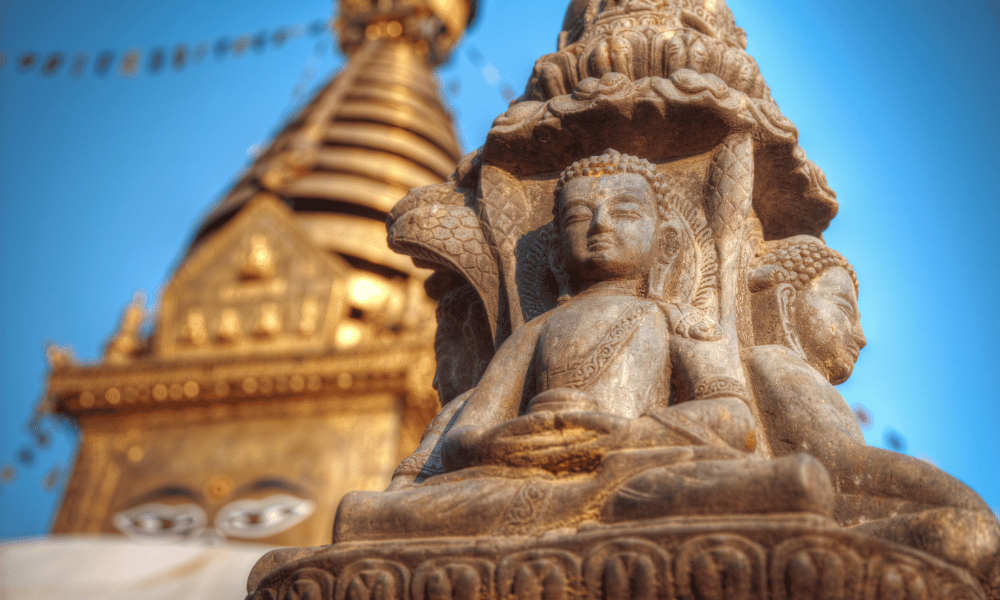
Kathmandu Valley was once a large lake, known as Nagdaha, considered a holy site by sages and religious figures. Once on a visit, Vipasvi Buddha (the first incarnation of Shakyamuni Buddha) cast a lotus seed into the lake, which later transformed into a celestial light known as the Aadi Buddha. The self-illuminating light elevated the overall popularity of the Nagdaha. The light was also named Swayambhu i.e. self-existent.
Several years later, Manjushri Bodhisattva made a pilgrimage to worship Nagdaha and the celestial light of the lotus. Upon arrival, he noticed how difficult it was for ordinary pilgrims to worship the light as it was situated in the middle of this gigantic lake. So with the Chandrahasa, the holy sword of Lord Shiva, and Prajna Paramita Sutra (a Buddhist holy book), Manjushri cleaved the hill of Chobhaar with his sword and drained the lake.
After Nagdaha was completely drained, Kathmandu city came into existence with vast fertile lands, and of course, the ever-illuminating celestial light in the center. Later the lotus is believed to have turned into what we now know as Swayambhu Dada (hill) and the light turned into an idol of the protector of the world. As a homage to the light and to earn some Dharma (religious merit), King Prachandadev built the Swayambhu Chaitya. The Chaitya was also indented to protect the idol from evil forces.
There is another tale where a giant serpent demon was ruling Nagdaha making it impossible for pilgrims to visit. Upon hearing about it, Bodhisattva Manjushree slayed the serpent while also cutting the cliff of Chobhaar, hence draining the lake. Swayambhunath is said to have been built on the plot where the demon’s head was buried and the stupa at the center is said to contain the demon's remains.
As a way of preservation and devotion, Swayambhunath has persevered through the test of time and still stands proud watching over the entire valley. There is possibly no way of knowing how exactly the Swayambhunath Stupa came into existence but it is undoubtedly one of the most precious jewels, history has bestowed upon us.
The stupa at Swayambhunath stands tall at the heart of the temple complex, radiating the wisdom and enlightenment of the Buddha. This grand white-washed tomb structure, topped with a spire and crescent moon and sun, symbolizes the perfect balance of male and female elements. And let’s not forget the mesmerizing eyes of the Buddha, painted on the four cardinal points of the spire, that seem to be watching over you, representing the all-seeing wisdom of Buddha.
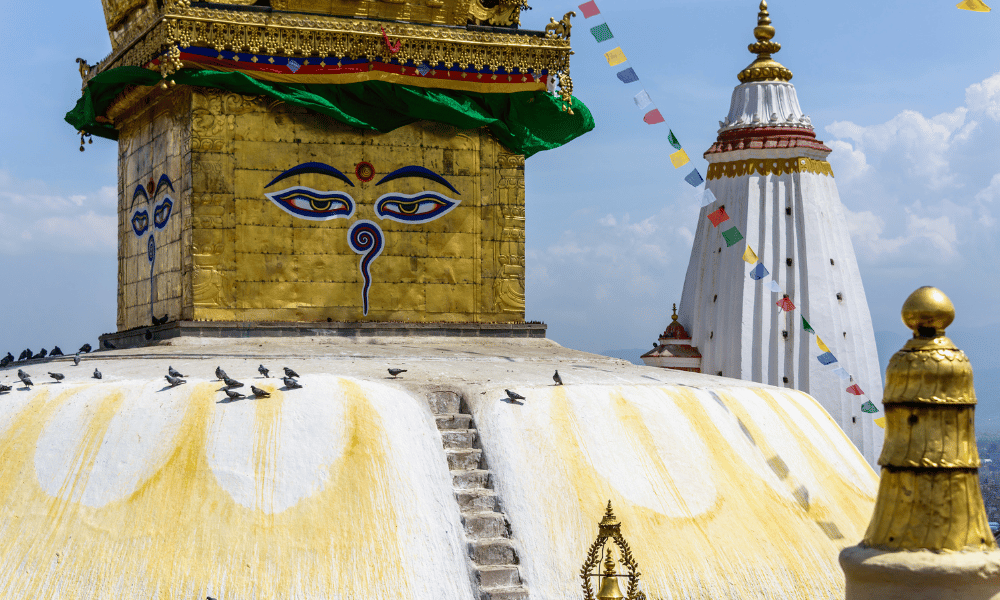
The Swayambhu Chaitya holds five chapels that are dedicated to five Dhyani Buddhas who also represent the five elements of air, water, earth, fire, and sky. It is then surrounded by several other smaller shrines, seemingly made in miniature Shikhara style. The dome of Swayambhunath was renovated in 2010 with over 20 Kg of gold to re-guild its top along with other constructional reforms.
The architectural theme of the entire surrounding is simple and elegant. It's nothing too extravagant but still keeps your eyes engaged. The white giant tomb, smaller shikhara style shrines, statues, carvings, etc. are to name a few. Maybe because of this simplicity, most of the monuments survived the earthquake of 2015 without much damage.
There is more to your Swayambhu visit than just the hill-top MahaChaitya. Swayambhu offers a wealth of unique sights and experiences for visitors who are sightseeing the marvels of Kathmandu. Here is what you will get to see on your visit to Swayambhunath:
Right at the foot of the Swayambhu Hill lies the Swayambhu Buddha Park, featuring the largest Buddha statue in Nepal. It was constructed in 2003 and is a popular hangout spot for locals looking to escape the hustle and bustle of the city. When you see the towering golden statues of Shakyamuni Buddha, Guru Padmasambhava, and Avalokitesvara right by the main highway, you'll know you've arrived.
The statue of Shakyamuni Buddha measures 67 feet, and the other two measure 64 feet each. Shakyamuni Buddha stands tall in the middle, radiating a sense of calm with his serene facial expression while holding a giant bowl said to contain the nectar of immortality in his hands. On his left, the compassionate Avalokitesvara is depicted with many arms, each ready to help those in need. On the right, you will see Guru Padmasambhava with a more fierce expression. He is said to have revealed the tantric teachings to the world.
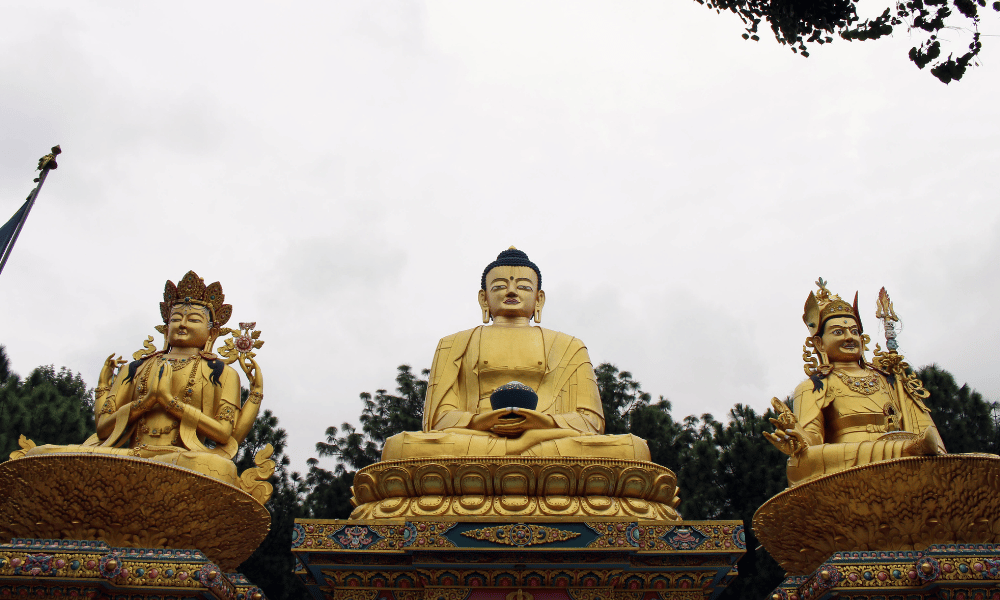
As you stroll through the Amideva Buddha Park, more commonly known as the Swayambhu Buddha Park, you will encounter prayer wheels that encircle the statues and the park, with beautiful stupas at the corners, enormous prayer wheels, and many murals. This park is an excellent resting spot after your hike up the hill.
There are multiple ways to reach the Swayambhu stupa from around the city. Recently a motor road has also been made to ease the hike for travelers with physical disabilities and health conditions. However, the main entrance to the stupa is hidden on the east side of Swayambhu hill. The way consists of 365 steps, taking you to the top of the hill. Each of the steps is believed to represent different stages of the human life cycle.
On the way, you will see the notorious monkeys going about their day. You’ll also come across several stone statues of peacocks, lions, stone chaityas, and local souvenir stalls. The hike may be a little difficult for you if you are not used to walking uphill so don’t forget to pack some water with you. As you near the top, you will be mesmerized by the panoramic view of Kathmandu Valley surrounded by high hills. It’s a truly magical experience.
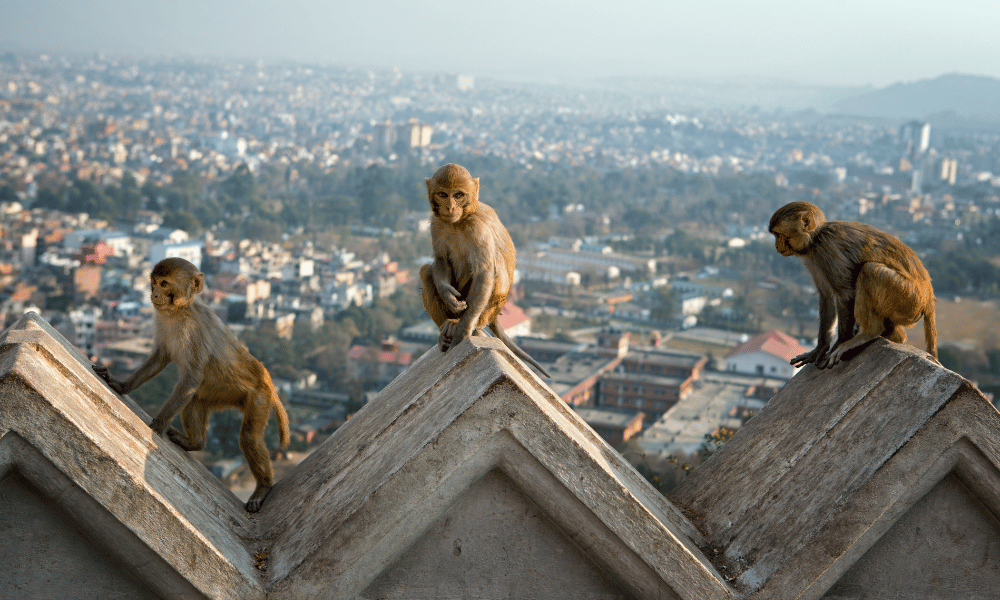
Swayambhunath, also called the monkey temple, is home to hundreds of playful and mischievous monkeys that roam stupa grounds, delighting visitors and locals alike. They are often seen climbing on the temple walls, swinging from trees, and playing with each other. The monkeys are an integral part of Swayambhu’s history with several myths revering them as the protectors of Swayambhu.
The monkeys are believed to bring good luck and prosperity, and many visitors make a point of seeking them out during their visit to the temple. While the monkeys are generally friendly, they can be quite territorial, so it's important to keep your distance and respect their space. They have been known to steal food and shiny objects from unsuspecting tourists, so it's best to keep your belongings secure.
On the western side of Swayambhunath, you’ll notice a small pond usually surrounded by visitors throwing coins in it. The pond is called the World Peace pond and is one of the most popular sites in Swayambhu premises. As you get closer, you will see a gilded bronze statue of Siddhartha Gautama in the middle of the pond with a bowl near his feet.
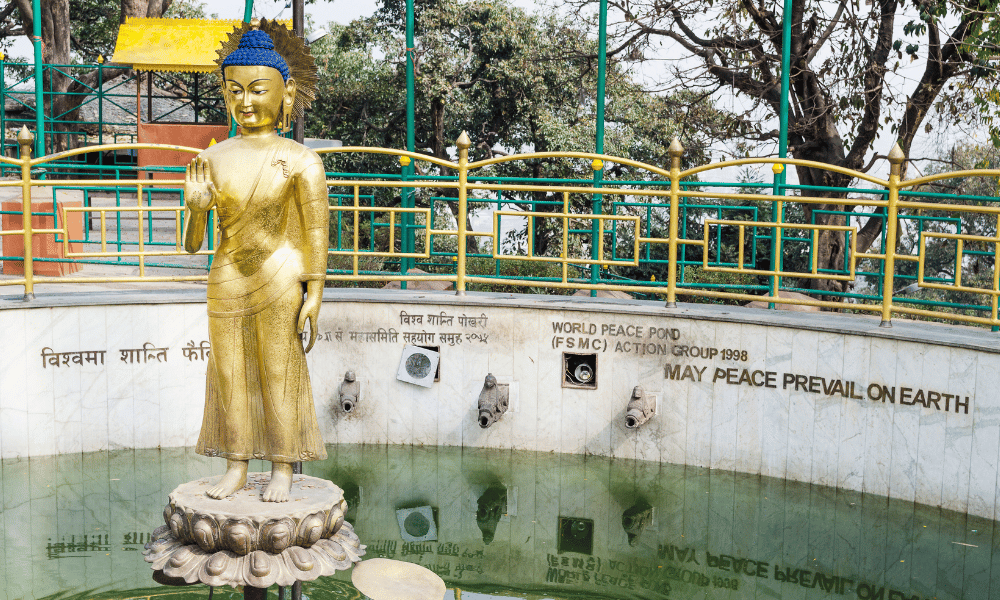
It is believed that your wish will come true if you can successfully throw a coin in that bowl. As coins are not commonly used in Nepal, you will see some vendors exchanging coins near the pond. The ticket counter for Swayambhu stupa is also located near this pond. So while you are there, make sure to get a go at your luck.
Visitors to Swayambhunath can see a large Bajra (or Vajra) displayed prominently at the base of the stupa. The word Vajra means "thunderbolt" in Sanskrit and represents a diamond-hard wisdom that cuts through ignorance and confusion. The Vajra at Swayambhunath is a large metal Dorje or scepter, with multiple arms or prongs, representing the different aspects of Buddhist teachings.
The Vajra is an important ritual object in Tibetan Buddhism and is used in many meditation practices and rituals. It is considered a symbol of the indestructible nature of truth and the power of compassion to conquer all obstacles. In Hinduism, Vajra is often associated with the god Indra, who is believed to wield it as a weapon to defeat demons and protect the world from evil.
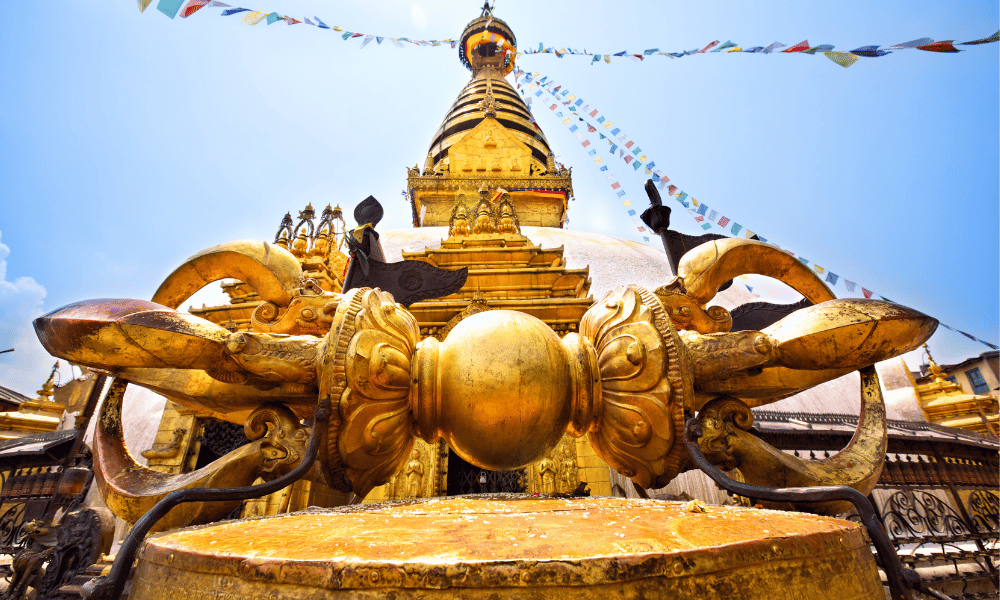
Dewa Dharma Mahavihar is an ancient Buddhist monastery on the western side of Swayambhu hill. The monastery was established in 1780 by a Bhutanese Lama and is a branch of the Kagyupa lineage known as the Drupa Kagyupa. The original building was destroyed around the 1800s and was later rebuilt with financial assistance from a Sikkim queen.
The renovated Dewa Dharma Mahavihar serves as a place of refuge for pilgrims visiting the Hariti temple and Swoyambhu Stupa to perform rituals. Despite being damaged during the 2015 earthquake, the monastery is currently undergoing renovation to restore it to its former glory. You can expect to see a rich history, architectural beauty, as well as spiritual significance of the monastery as the center of Buddhism in Kathmandu.
The Ajima temple, also known as Harati temple, is located in front of Dewa Dharma Mahavihar. This traditional Nepali pagoda-style temple is dedicated to the goddess Hariti, also known as Ajima ('Aji' means Grandma, and 'ma' means mother). Hariti is originally a Hindu deity, later revered by both Hindus and Buddhists as the deity of smallpox and other epidemics.
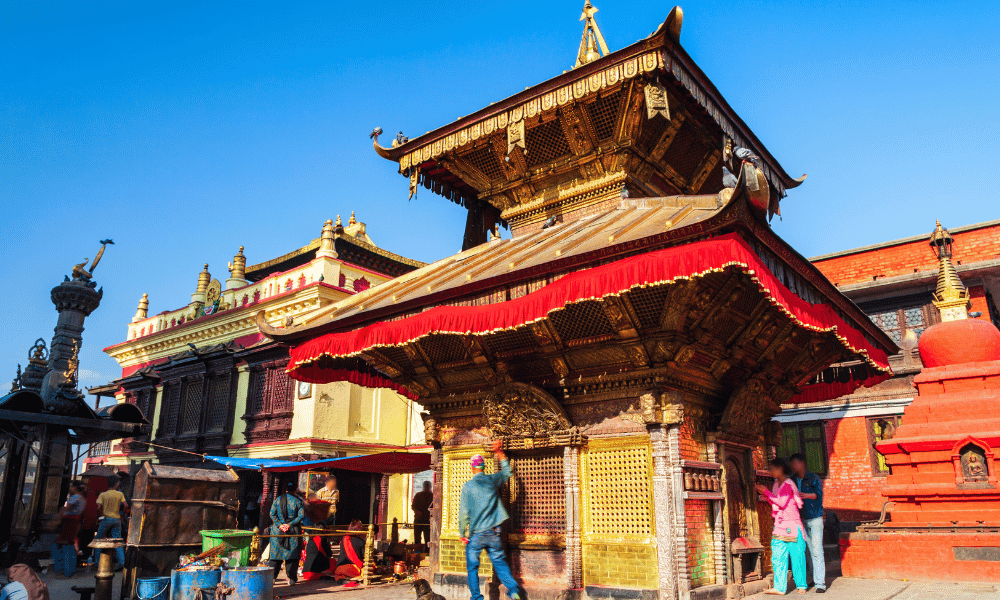
Hariti made five commitments, including taking care of the Swoyambhu region and children and freely moving through space to visit destinations where Buddha is honored. She is often represented surrounded by children all around her. Devotees come to the temple to offer worship to the goddess through various rituals to protect their children from diseases or epidemics.
The temple is covered in gold gilding, a result of generous donations from various donors with deep faith and devotion to Hariti Maa. It is one of the many monuments that can be found on Swayambhu hill and stands as a symbol of the devotion and protection offered by the goddess.
King Pratap Malla felt that the standing Swayambhu stupa was lacking in grandeur, so he decided to build two shikhara temples to enhance its appearance. Despite facing initial resistance, the King eventually received permission to construct the temples, with the northern one named after himself, i.e Pratappur, and the southern one named after his second queen i.e Anantapur.
The doors of these historic temples have been kept closed throughout time, only opened on rare and special religious occasions. Under the Anantapur temple, a stone inscription can be found, in which King Pratap Malla wrote a eulogy dedicated to the goddess Ekajata Vajrayogini, written in Jatimungara meter and affirming the completion of the temples with proper rituals and methods.
Despite the King's efforts to ensure the longevity of the temples, they have faced destruction by fire and lightning on two separate occasions. Unfortunately, the temples faced damage again during the 2015 earthquake but were later restored with the help of the Nepali government, completing reconstruction in 2019.
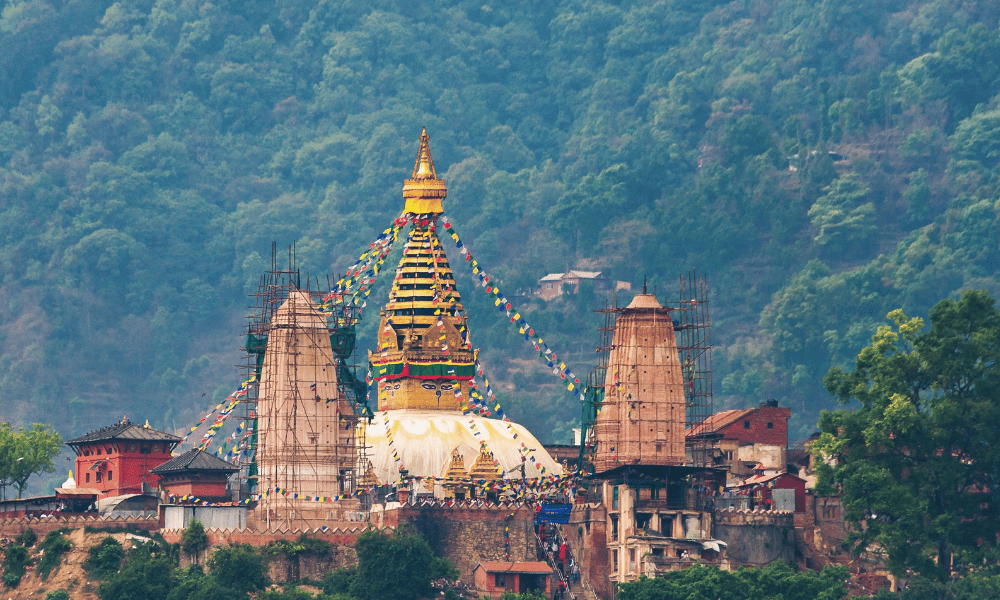
Swayambhu Buddhist Museum is dedicated to showcasing the rich cultural and historical heritage of Buddhism in Nepal. The museum holds a vast collection of Buddhist artifacts, manuscripts, texts, and paintings, providing a glimpse into the religion's legacy in the country. Visitors can expect to see ancient scriptures, Thangkas, wood carvings, and other unique artifacts on display.
One of the museum's main attractions is its collection of Tibetan-style Mandala paintings, which depict intricate designs and patterns that symbolize the universe. The museum also showcases an extensive collection of ancient manuscripts, including hand-written Buddhist texts and prayer books, providing an in-depth look into the religion's teachings and beliefs. Make sure to separate some time for the museum as it's fun-packed and free to enter.
The Shantipur Temple in Swayambhu is renowned for its rich history and legends. It was initially called Akashpur but was renamed after the legendary tantric master, Shantikar Acharya. At the temple entrance, you will be greeted by fierce guardian statues. The inner walls of the temple boast stunning hand-painted scenes, inspired by the "Swayambhu Purana".
Inside the temple lies a mystical inner sanctum, where it is said that Shantikar Acharya still meditates by a magical pool and an eerie cave. This inner chamber is only accessible to the oldest Buddhist tantric priest from the Buddhacharya family residing at the Swayambhu stupa. This priest holds the authority to enter the premises twice a month for ceremonial activities.
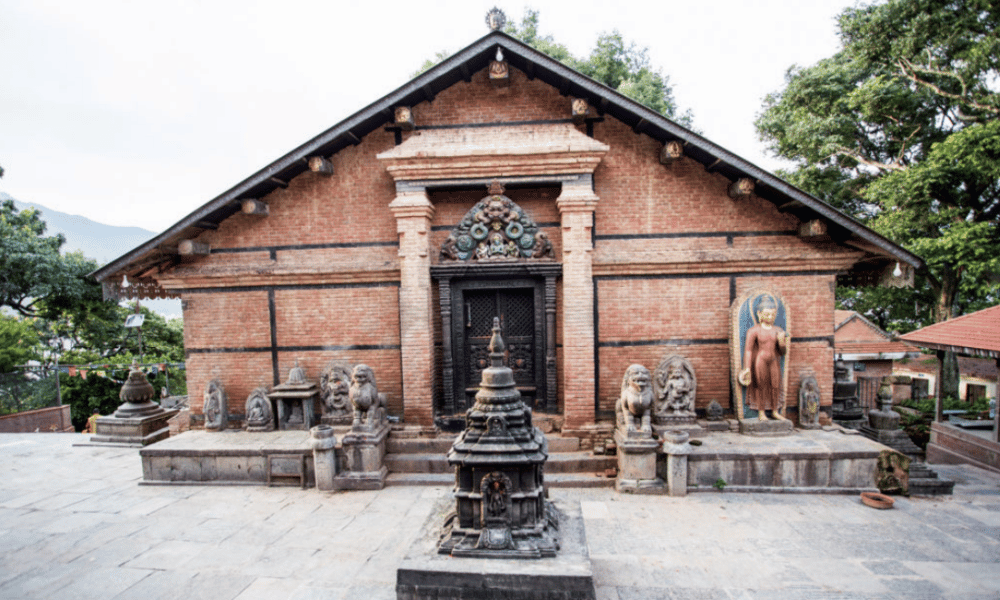
The Shantipur Temple holds great significance in the history of Swayambhu and continues to captivate visitors with its intriguing legends and unique aura. It stands as a testament to the rich cultural heritage of Swayambhu and offers a glimpse into the spiritual and mystical past of this sacred site.
The Gunla Festival is a Buddhist Newari festival celebrated annually all over Nepal, especially in the Kathmandu Valley. It is a month-long religious event that takes place from the Shravan Shukla Pratipada to Bhadra Shukla Pratipada. The festival is considered a time for Buddhists to show their devotion to Lord Buddha and accumulate religious merit (Dharma/dhamma).
Gula parva is observed nine months after the beginning of Nepal Sambat (“Gun” means nine and “La” means month in Nepal bhasa). During Gunla Parva, participants purify themselves early in the morning before starting rituals for the festival. You’ll notice devotees playing traditional instruments, and visiting the Swayambhu Maha chaitya, one of the most revered Buddhist stupas in Kathmandu.
The air is filled with the sweet sound of participants reciting hymns and chanting mantras while circumambulating the Swayambhunath stupa as a sign of their devotion. Devotees from all over Kathmandu flock to Swayambhu to participate in Gunla Parva, while those unable to visit Swayambhu visit other nearby chaityas, gumbas, and stupas to earn merit.
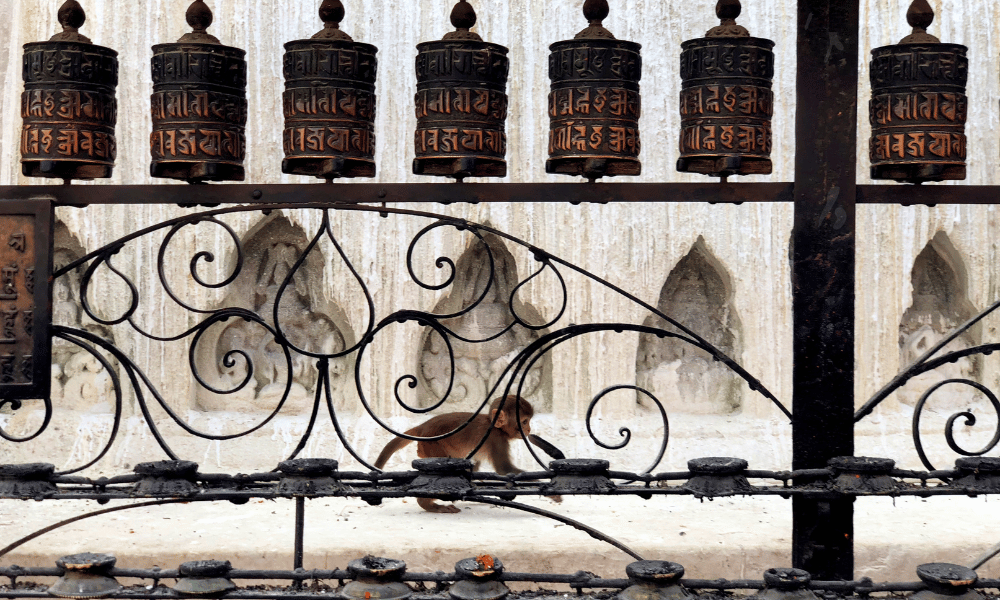
In addition to religious observances, a fair is also held at Swayambhu for the duration of the Gunla festival. Visitors can find an array of colorful stalls selling traditional foods, trinkets, and other wares and enjoy cultural performances, music, and dance. After Swayambhu, participants visit the Bijayashwori temple and worship Seto Machhindranath to conclude the celebration.
Swayambhunath, set on a hill overlooking the Kathmandu valley, is one of the most sacred sites in Tibetan Buddhism. It is considered a symbol of spiritual peace and enlightenment, home to a unique blend of Tibetan, Hindu, and Buddhist cultures. With the rich history backing it up, Swayambhu, formerly known as Manjupatan, has been a major pilgrimage site for Buddhists for over 2000 years.
In the beginning, Swayambhu was mainly a Buddhist sacred site but as time continued and the two religions mingled, changes started to occur. The Buddhists accepted the Hindu goddess Harati (Ajima) as their protector against epidemics and diseases. Similarly, many Hindu temples and Buddhist chaityas were made around the main stupa, changing the overall ambiance of the site. Now you can barely spot any differences between the rituals there. It is not to say the differences don’t exist, but they are so well blended that they look like a part of one singular culture.
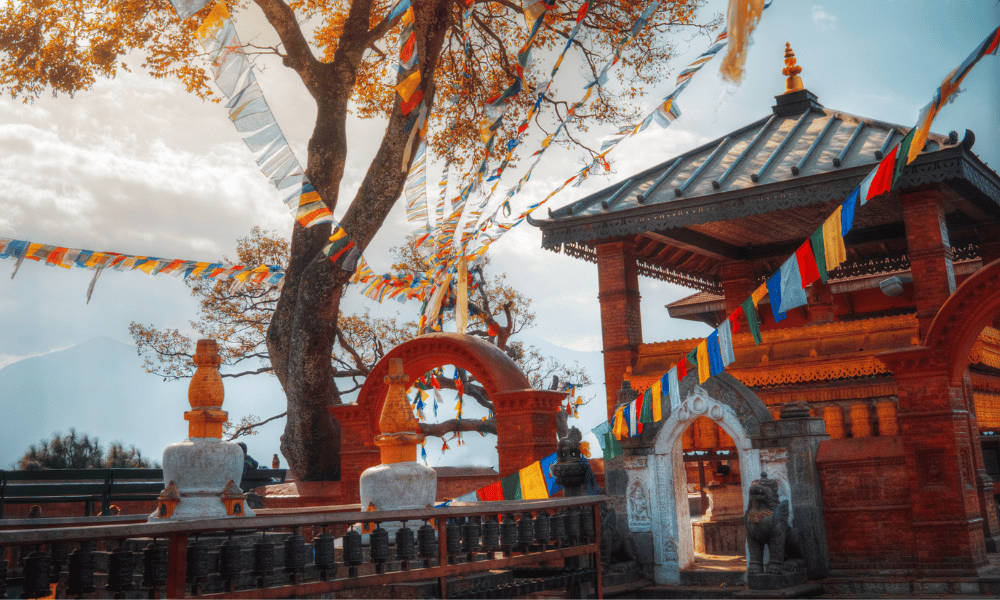
When I think of Swayambhu, rotating prayer wheels, the smell of burning incense, hymns, and chants pass my mind. There is no face attached to it, nor any religious background. Swayambhu reminds me of peace and tranquility, while always being shrouded in chaos. It is a melting point of cultures and customs from every geographical, cultural, or religious background. Whether you are a Buddhist or not, Swayambhunath is sure to leave you in awe if provided the chance to.
Swayambhunath is located 3 kilometers west of Kathmandu Square (central Kathmandu) on top of a small hill. To reach Swayambhu, you can either take a public bus, a bicycle, or a taxi or simply hike to the stupa. If you are staying in Thamel, Swayambhu is only about an hour or so away on foot. Be sure to check for the shortest route on google maps as the winding Gallis can be confusing.
You can find a public bus to Swayambhu from anywhere in the valley. As the main entrance lies right beside the main highway (Ringroad), you will have no problem spotting it from your bus. You will have to walk for a little longer distance than you’d have on a taxi but the hike is well worth it. You will get to see the local vendors, notorious monkeys, and the panoramic view of the city on your way up.
Taking a taxi you can go up to the second entrance of Swayambhu which lies right in front of the World Peace Pond. You will still have to hike up the stairs for a while to reach the main stupa. The same goes for a bicycle. You can rent one from any rental shop in the city and enjoy your ride there.
To get the best view and atmosphere, early mornings or late evenings are the best time. Early in the morning and evening, you can see the Swayambhunath Stupa bathed in the golden hue of sunrise and sunset. It is a magical view sure to mesmerize everyone in the vicinity. At this time, Swayambhu is less crowded so you can feel the peace and tranquility in the atmosphere.
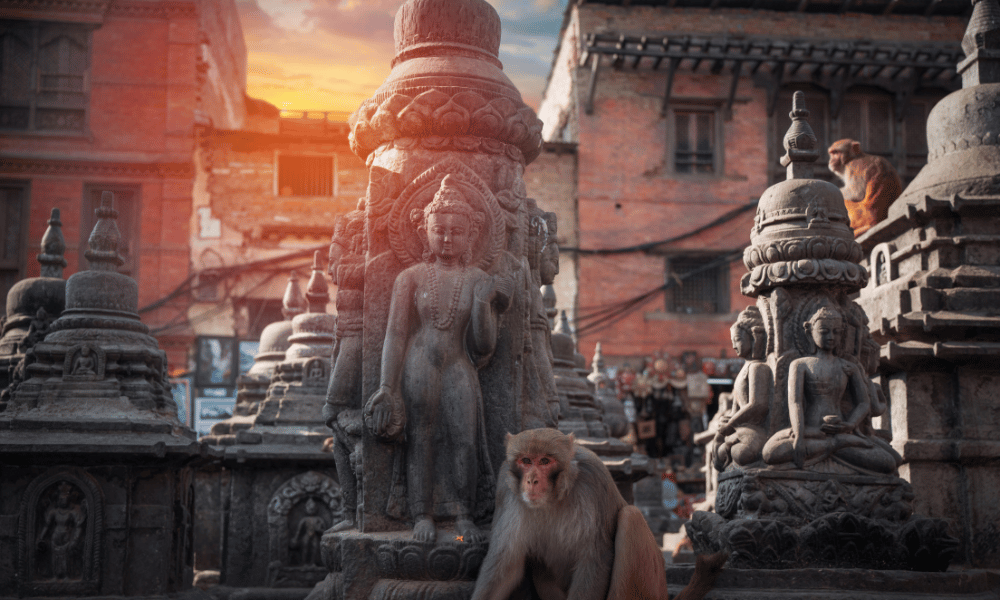
The entry fee for Swayambhunath is much cheaper than any of the Durbar Squares. For SAARC nationals, the ticket costs NRs 50 whereas visitors from other countries will have to pay NRs 200. Entry is free for Nepalese citizens and children below 10 years old.
|
Nepalese citizens (and children below the age of 10 years) |
Free |
|
SAARC Nationals |
NRs. 50 |
|
Other nationals |
NRs. 200 |
Swayambhunath is open 24 hours, on all days of the week so you can visit at any time at your convenience.
Visiting a large area of a grand monument in a limited time can be overwhelming. Here are some tips to make the most out of your trip to Swayambhu:
At all times of your visit, be mindful of the monkeys. They may look cute and harmless but if they are agitated, they will attack. The best thing is to avoid teasing, feeding, or any form of direct contact with them. Also, keep your food and shiny belongings safe as these little thieves love some tasty snacks and pretty ornaments.
The main stupa is set on a hill, with many stairs leading up to the Swayambhunath complex. Be sure to wear comfortable shoes that are suitable for walking.
Swayambhu is a beautiful and pristine site, and visitors are expected to dispose of their trash properly to help keep the temple clean and litter-free.
Swayambhunath can be a busy place, especially during peak tourist season, so it's a good idea to plan your visit in advance to avoid crowds. Try to arrive early in the morning or later in the afternoon to avoid the busiest times.
Visitors are encouraged to reflect and meditate while exploring stupa premises. It is a peaceful and spiritual place, perfect for unwinding your thoughts away from the main city.
The main temple complex requires you to climb a flight of stairs that are not always of the same height or in the best conditions. So it’s recommended to pay attention to the stairs to avoid any unwanted scenarios.
If you can afford to, hiring a guide is always the best option to learn most about a place in a limited time. Local guides can and will provide you with in-depth information about Swayambhu and its various monuments and shrines.
Purchasing souvenirs and other items from local vendors help sustain the local economy and cultural heritage of the city. It will also cost you way cheaper to buy souvenirs from local vendors than from any other souvenir shops.
Swayambhunath is famous for the giant white dome (the Swayambhu Stupa), the local monkeys, and surrounding temples and chaityas.
Hundreds of monkeys reside on Swayambhu hill, mostly in harmony with the locals. You will see them everywhere, grooming or playing with each other, jumping around, or simply sunbathing. They are one of the main highlights of the stupa, hence Swayambhu is named the Monkey Temple by visitors.
The two eyes in each cardinal direction of Swayambhu Maha Chaitya represent the all-knowing eyes of Buddha, believed to look over the city, and the ek (one) symbol in between the eyes represents unity. Similarly, the white dome of the stupa topped by a spire and crescent sun and moon represent balance and harmony between males and females.
The first ever recorded name of Swayambhu was “Singru-vihara-chaitya-bhatjarika” but its official name is Swayambhu Maha Chaitya.
Swayam means “self” and bhu means “existence”, so Swayambhu literally translates to “self-existent one”.
Swayambhu was listed in the UNESCO World Heritage Site in 1979 AD along with six other heritages inside Kathmandu Valley.
There are shreds of evidence showing that the Swayambhunath stupa was established somewhere in the 5th century. However, the locals and religious figures believe it to be more than 2000 years old.